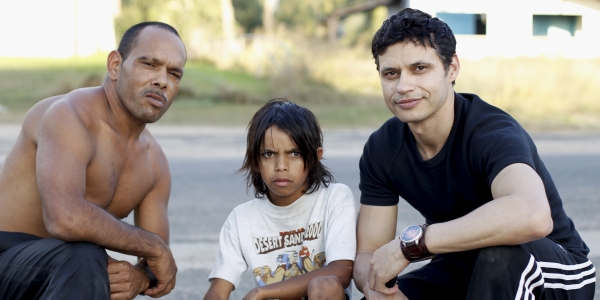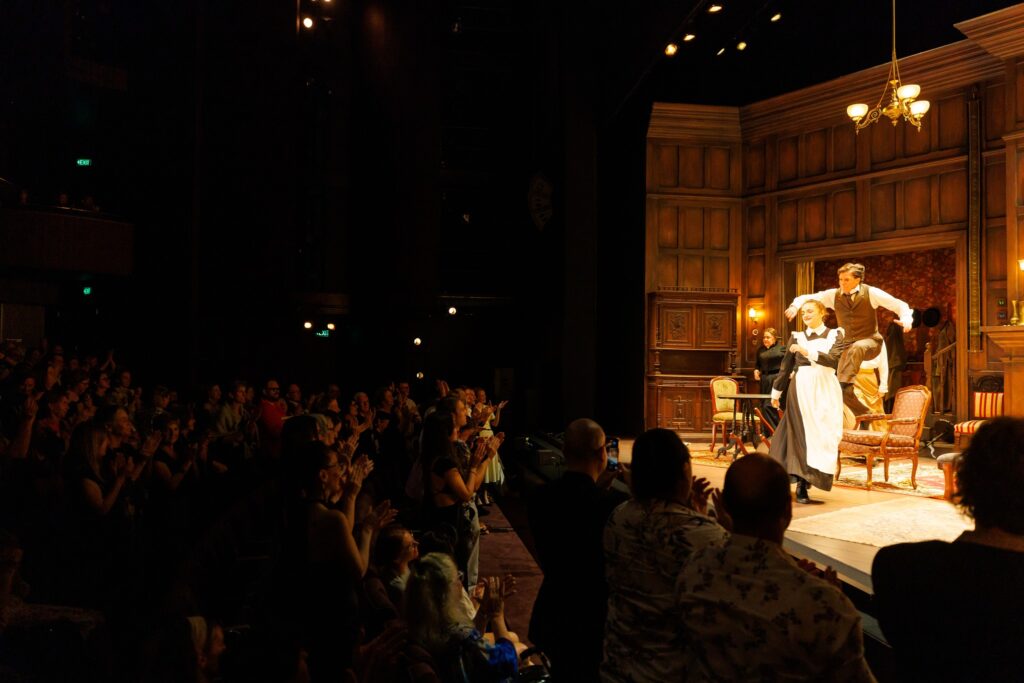The film is largely based on his own observations of Toomelah over a period of time. Sen observed people, and took away heaps of notes and pages of dialogue. The film mirrors the lifestyle of a number of kids out there, many of whom are looking for a positive male role model. Even when he went to Brisbane to study photography, Sen would often go back to visit Toomelah and reconnect with the place.
“I just started to see it in a different light,” he says when talking about the genesis of the film. “Early memories of Toomelah were of lots of fun and running around with other kids, we’d be going down to the river and all that sort of thing. But I guess when I came back and was a lot older I could see a lot of the issues that were facing the community. And those issues ended up working their way into the film.”
The film follows territory explored in other indigenous-themed dramas, like Samson And Delilah, Yolngu Boy, the recent Mad Bastards, etc., which offer an indictment of the treatment of aboriginal people. Sen doesn’t pull his punches in exploring the depressing life on the mission, and its cycle of despair, dysfunctional families and crime. Shot on a very low budget Sen brings a verite documentary-like realism to the material with hand held camera. The cinematography is striking and captures the natural beauty of the location.
“I think that my documentary background has informed my feature film approach,” he explains. “Documentary filmmaking involves you adapting to the environment that you were filming in, whereas the conventional way of making a feature film is you make the environment adapt to you and your crew. So when I make feature films, especially now, I just prefer the approach where you just go in and adapt to the environment around you.
“I think my documentary work gave me the confidence to go into Toomaleh myself and make the film by myself. The reason I went in alone was to try and capture some authentic and natural performances from the local people. I knew that if I took a crew in there they would be too shy and they would really clam up, and the performances would be very self-conscious.”
The cast comprises of non-professionals, drawn from within the community itself. Sen was determined to work with the locals, and he cast the characters pretty closely to who they were in reality, so that people didn’t have to try too hard to be someone they weren’t. When he shot the film, he didn’t show them the screenplay, as he thought that would get too confusing. He would feed the actors the lines as he was filming, and they would just respond and say the lines. There wasn’t a lot of improvisation either.
The standout performance in the film comes from young Daniel Connors, who is a natural and gives an impressive and earnest performance as the angry young boy trying to find his place in this remote community. When Sen first went out to Toomelah to write the script he wasn’t sure which way to take the story. Then one day he saw Daniel walking up to this house where he was hanging out with some teenage boys. Daniel just began to start fighting with them and arguing with them. He had a butter knife in his hand, and within a few seconds he was threatening to slit all their throats. He just had an amazing cheekiness, Sen recalls, and an amazing presence. That inspired Sen to write the story around him.
Dean Daley Jones, from Mad Bastards, was brought into the film because Sen needed a big physical presence to play one of the characters. “And I asked around Toomelah for someone to play this role, and everyone said, ‘Well yes there are lots of guys like that, but they’re all up in jail!’ So it was difficult to find someone. My producer David Jowsey had also produced Mad Bastards, and he suggested Dean. So we got Dean up there and he slotted right in with the people.”
Toomelah received ten minute standing ovation when it screened at Cannes earlier in the year. “The screening was such an emotionally overwhelming experience for the actors and also for myself,” Sen recalls. And a screening of the film for the local community in Toomelah was also greeted with a rapturous reception. “It was an amazing experience, everyone came together, even families who had been fighting with one another, they all came together as one. The laughter just continued from beginning to the end of the film. So it’s had a really positive experience for the local people there.
“My one hope for Toomelah was in getting another step forward in gaining some sort of awareness and understanding of indigenous communities,” Sen continues. “Already at the few screenings we’ve had I’ve sensed that there are few people who come out with more understanding and more awareness, and that’s definitely a good thing.”







